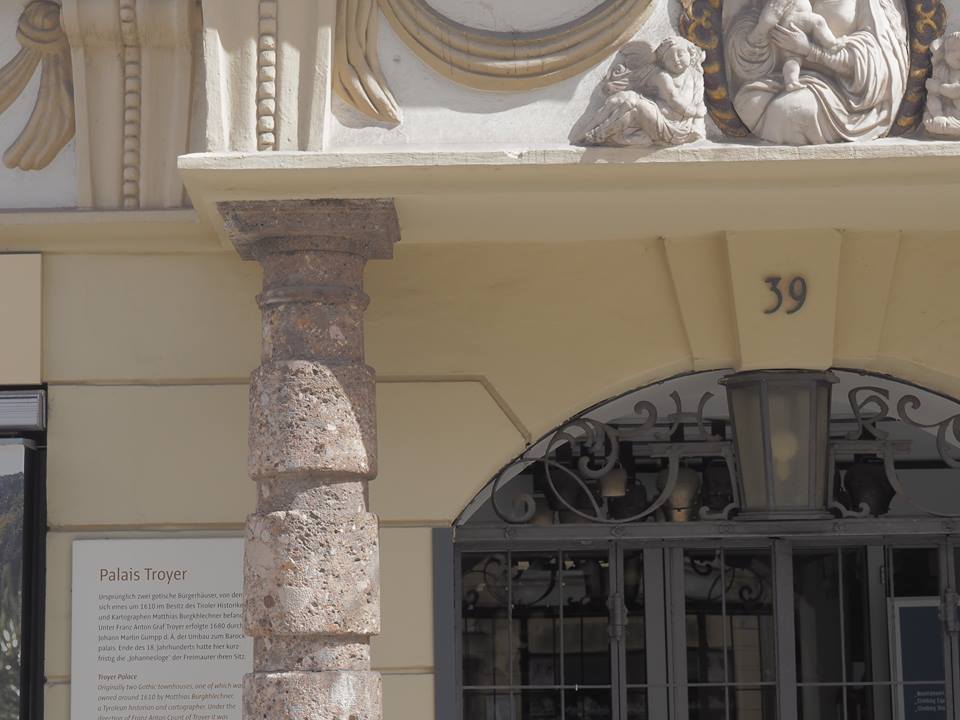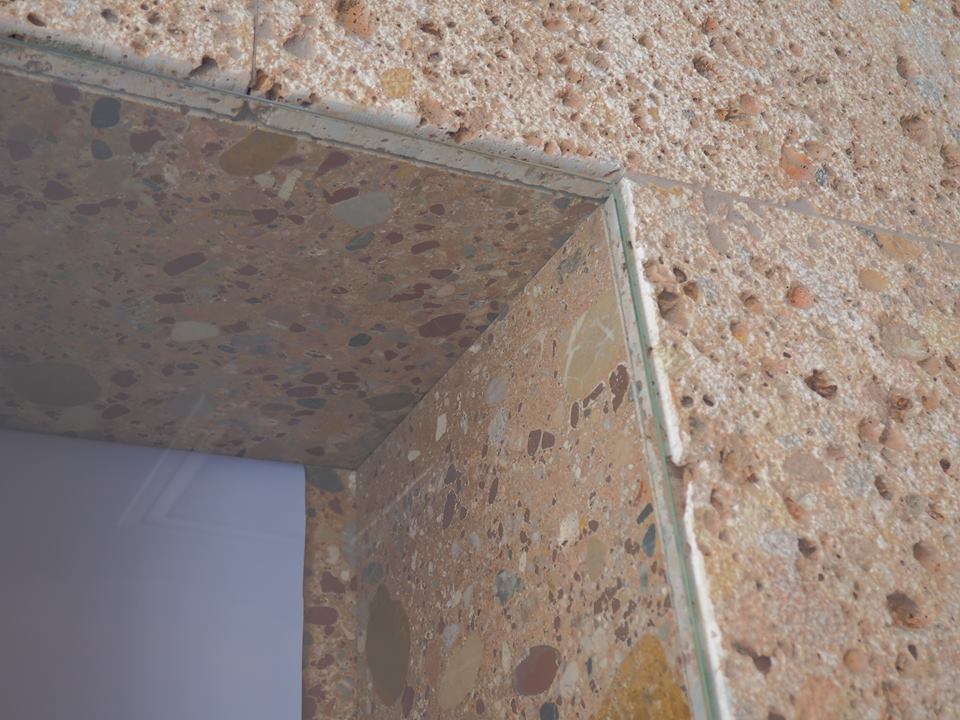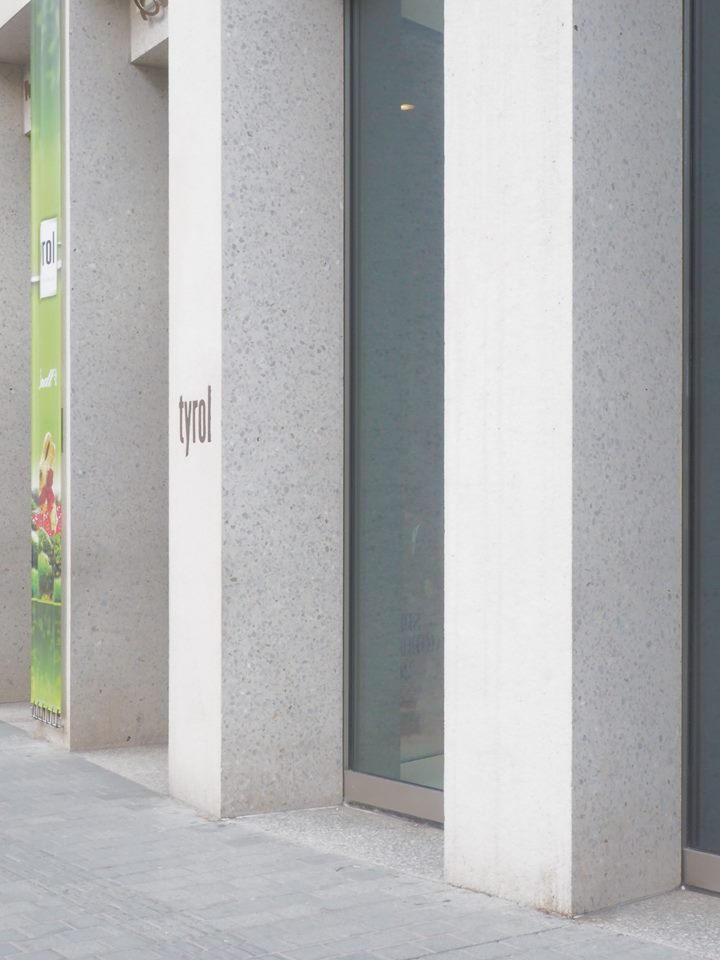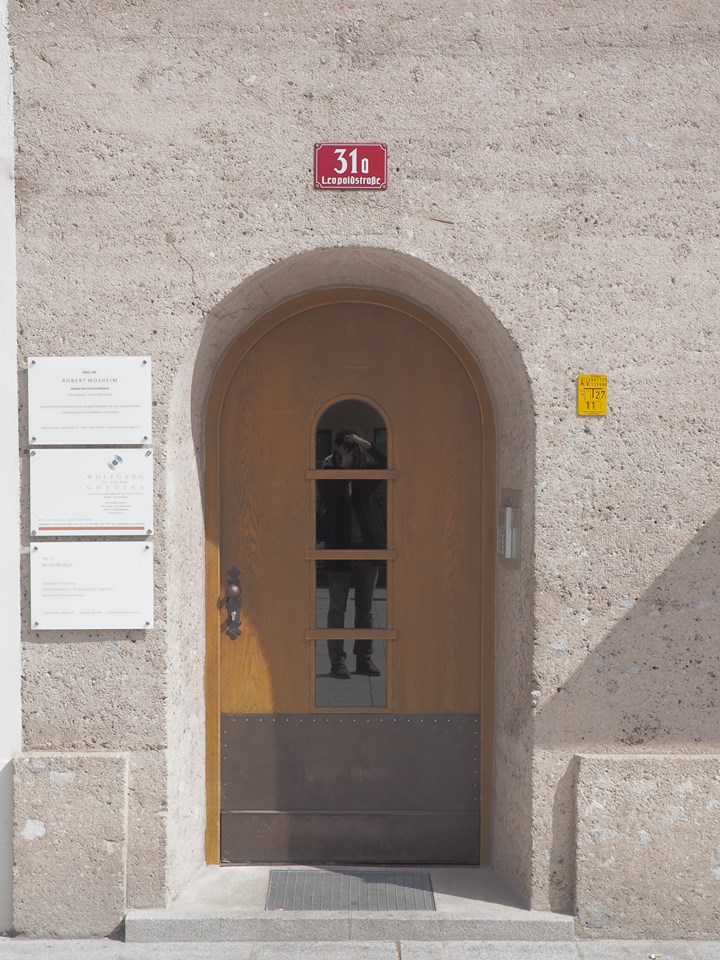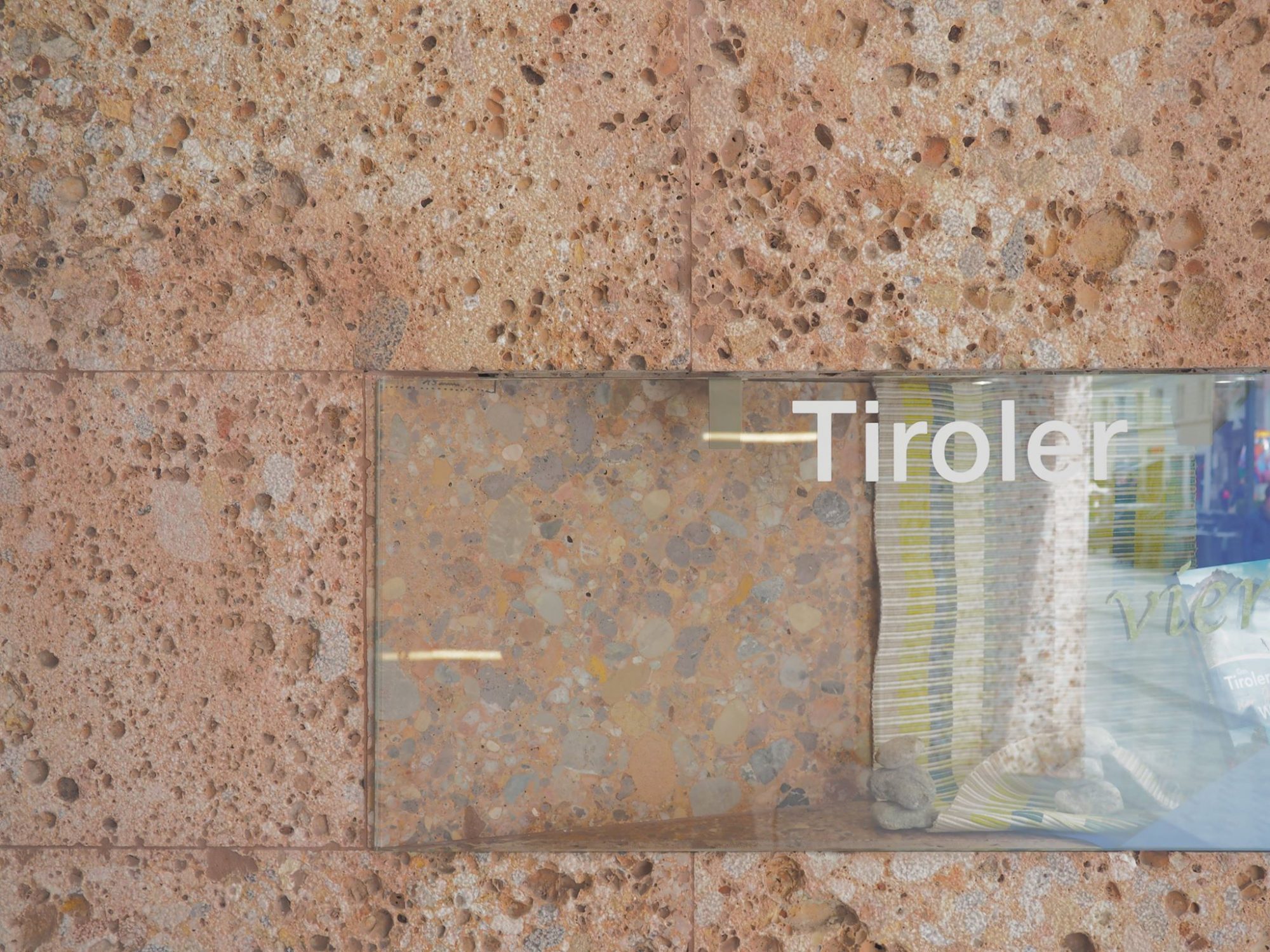In the valleys of Tirol and especially in Innsbruck, the local stones are so present in that it’s diffcult to not notice them. They are used in almost every building in the city centers, even if we can just note their present punctually. Indeed, most of the buildings are coated and painted but the stones remain often visible to highlight certain elements of the building such as basements, sculptures, doors frames…
This porous stones seems to be the result of the compressions of a lot of different minerals – Geologists have identified more than hundreds types of natural mineral in Tyrol (calcite, albite, almandine, quartz…), some of them are really specific from the region such as the stone called “tyrolite”) – each of them brings its particular color and texture in the city landscape.
Of course this stones are particularly visible on old buildings, especially palaces and churches. But modern architects don’t miss the opportunity to use this fine material in a new way.
On new constructions, they often use cut stones or marbles as a cladding (for example on the basement). Sometimes this minerals are also mold in a mortar, to build new masonry pieces.
This masonry offers much more formal possibilities to architects that cut stones. Masons could mold this minerals in huge slabs (for example on Landhaus platz). Sometimes they mold them in a fioor called granito or terrazzo (especially used in the inner city shops), sometimes in high pillars or colonnades ( Peek And Cloppenburg building from David Chipperfield architects), sometimes also in arches or sculptural urban furniture.
Mold in the concrete, the local minerals are naturally hidden (the mortal occupies most of the surface along the formwork). But as soon as these concrete pieces are cut, sand or polished, the masonry reveals the wealth of the different components and allow to create a wide range of effects.
This masonry gives the cities a special character. Most of the buildings seem to be on “their right place”, “to have always been there”. In fact, the stones just traveled a few kilometers since the time they were cut off from the montains. If some constructions have been built recently, the material is as a part of the material is as old as the landscape itself. […]
